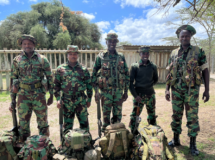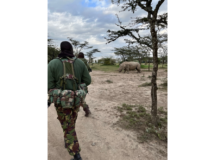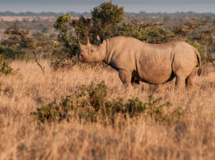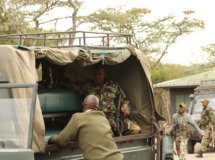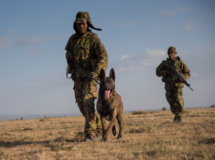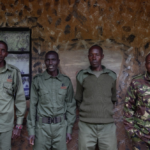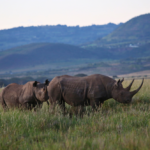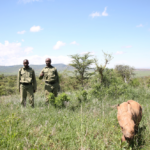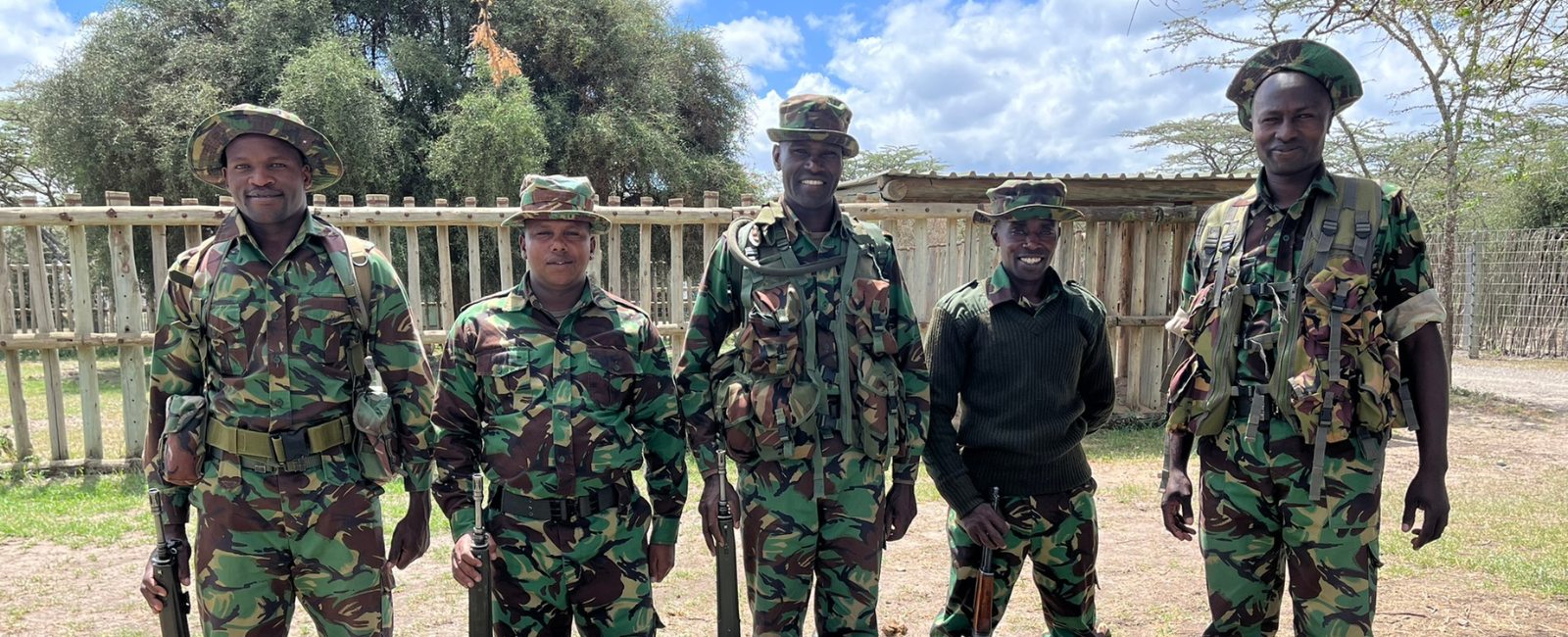
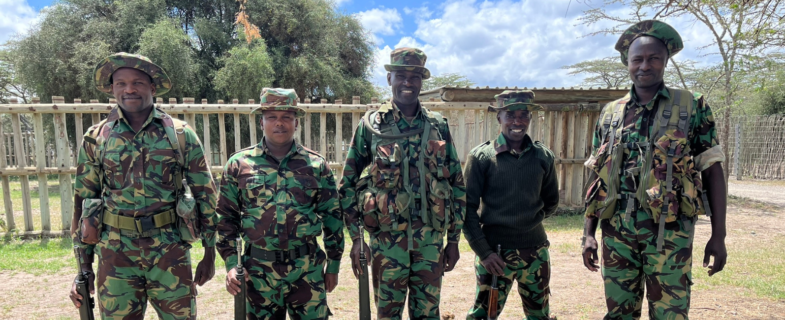
Kenya: Ol Pejeta Conservancy
Much like the rest of Laikipia, the land on which Ol Pejeta now stands was once managed as a thriving cattle ranch, where wildlife – particularly large predators – received little tolerance. However, today, whilst cattle farming remains an integral part of the Conservancy, this not-for-profit organisation protects more than 110,000-acres of wildlife habitat and works closely with local communities.
In 1993, amidst the poaching crisis that swept across Kenya, the property began its involvement in rhino conservation when it received its first 20 black rhinos. This population has since multiplied and, today, more than 150 Eastern black rhinos (the largest population of this subspecies in the world) live here. The Conservancy also received its first Southern white rhinos in 2005 and, since 2009, has been caring for the last two known Northern white rhinos on earth.
The problem
Laikipia County, of which Ol Pejeta is a part of, is facing many threats to the integrity of its ecosystems and wildlife populations. Unsurprisingly, rhino poaching continues to be a major concern and many rhinos were lost during the current poaching epidemic, spiking in 2013 when 59 rhinos (8% of the Kenyan national total) were illegally killed. Since then, enhanced protection efforts put in place have reduced poaching levels, with Ol Pejeta itself recently celebrating four consecutive years without a single rhino poaching incident. However, wider challenges within the landscape mean that complacency is not an option.
With illegal automatic weapons common in the landscape and areas further to the north, the County is a hotspot for insecurity. Historical tribal conflicts and rising tensions between pastoralists for grazing, exacerbated by a growing human population and droughts, have created an area rife with cattle rustling and petty theft – crimes that have led to a further proliferation of firearms.
Tackling these issues has been made more difficult by the 2-year reduction in revenues brought about by the Covid-19 pandemic. Heavily reliant on tourists, livestock and fund-raising activities, the global lock-downs resulted in severe financial losses across Africa’s conservation areas, causing many conservancies to exhaust much of their own reserves.
How is Ol Pejeta tackling these problems?
A large population of rhinos makes a tempting target for poachers. Having high levels of security in place to counter this threat is therefore a necessity and Ol Pejeta takes this very seriously, employing more than 150 rangers across the property. The anti-poaching unit consists of a K9 Unit, involving tracking and detector dogs, as well as armed National Police Reservists. Tackling other security concerns for local people, such as cattle rustling, has meant that the rangers have a healthy relationship with the surrounding communities. As a result, communities now have a more positive attitude towards wildlife, and even provide intelligence about potential poaching gangs and wildlife trafficking. This helps the teams to monitor criminal activities before any incursions occur and rhinos are poached.
To ensure these ranger teams are always performing at their best and ready to tackle different challenges, frequent training courses at regular intervals are paramount. The courses allow the men and women on the ground to work as safely as possible, with confidence in one another and in accordance with the strategic requirements of the operations. These, in turn, give the teams the ability to respond to serious incidents in a coordinated and unified way.
Patrolled daily by these rangers, the Conservancy is surrounded by 120-km of electric fence, keeping the wildlife in and poachers out. Two corridors, however, allow the movement of all wildlife species out into the wider Laikipia landscape – all species except rhinos. This protocol is in place to keep the rhinos safe by restricting them to the Conservancy where they can be monitored and protected by its rangers. However, with the Conservancy’s rhino population at its highest yet, there is a need to expand the amount of habitat available. Conversations with local community leaders and other partners are ongoing to integrate the Mutara Conservation Area, a 20,000-acre property to the north-west of Ol Pejeta, into the Conservancy’s existing rhino habitat.
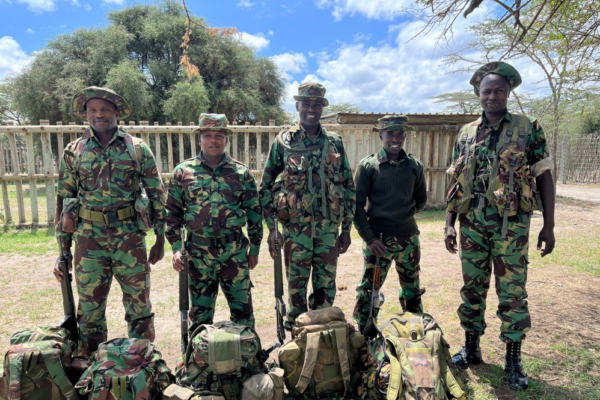
Anti-poaching rangers at Ol Pejeta work for 12 hours each day, from 6pm to 6pm.
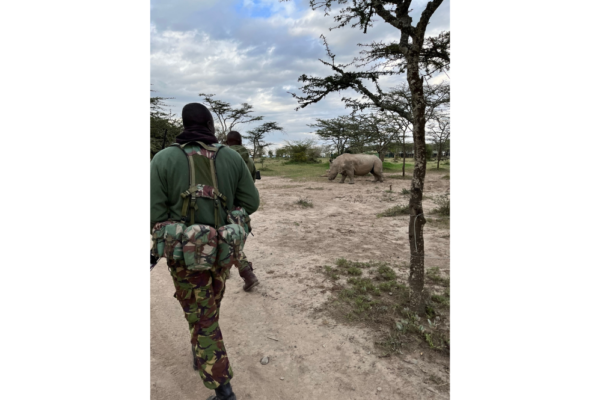
Rangers at the Conservancy are key for rhino protection.
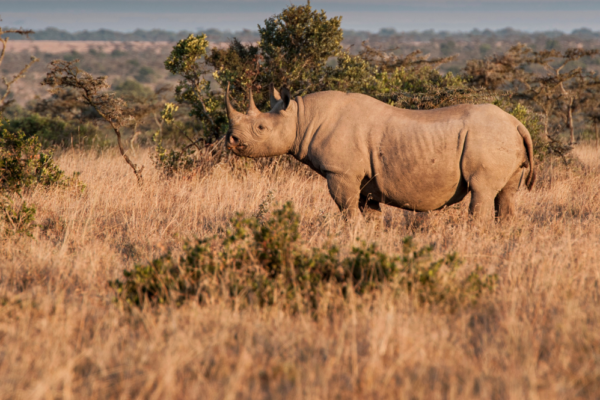
A population of Eastern black rhinos lives at Ol Pejeta.
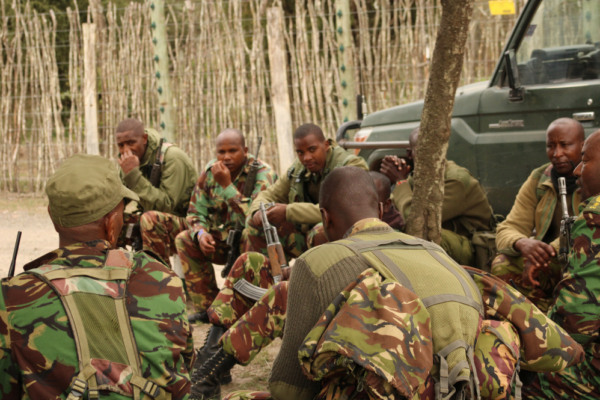
Before deploying, the team is briefed together and assigned patrol areas.
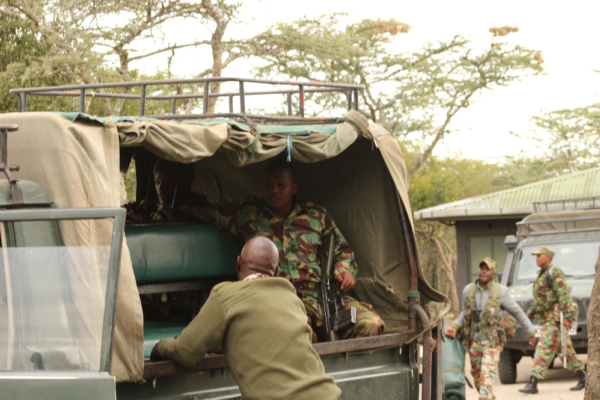
There are more than 150 rangers at Ol Pejeta working to protect the wildlife, including rhinos.
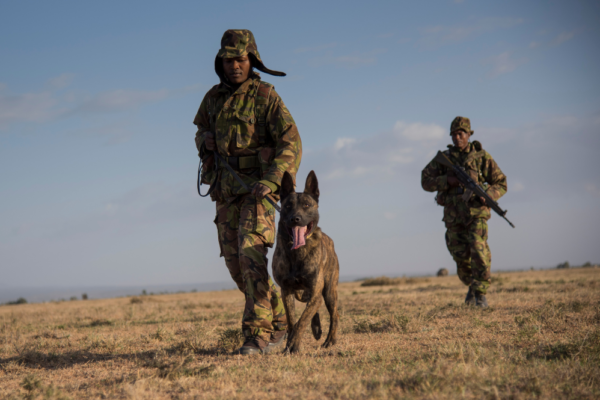
Ol Pejeta's canine unit is an essential part of its anti-poaching team.
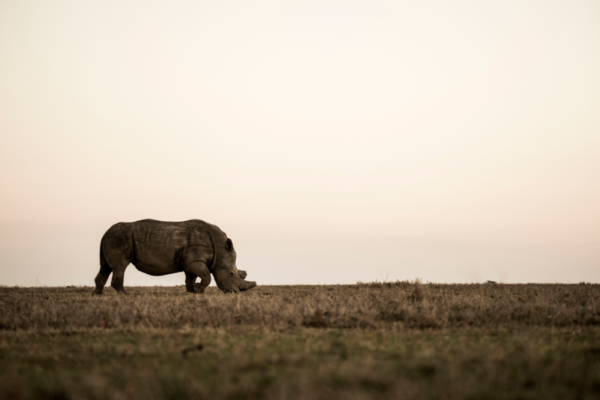
Ol Pejeta is home to black and white rhinos, including the remaining Northern white rhino.
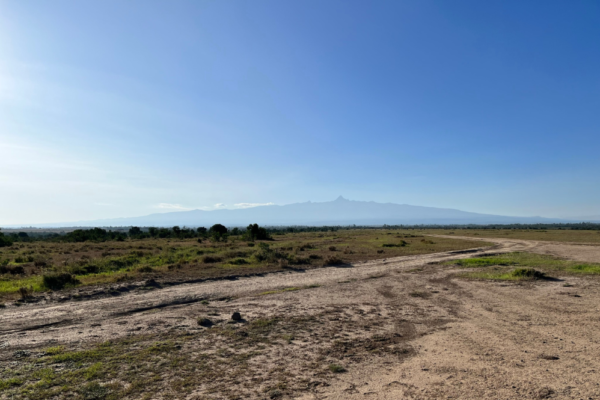
A view of Mount Kenya from Ol Pejeta.
Our work
Save the Rhino International has been supporting projects across Kenya for many years and we are delighted that Ol Pejeta Conservancy is one of our partners. We successfully applied to the United States Fish and Wildlife Service for a grant in 2010 to build a capture and translocation facility at Ol Pejeta and then, more recently, supported Ol Pejeta during 2020 and 2021 when we raised more than $900,000 to cover the core operational costs of Kenya’s private and community land rhino sanctuaries. Hit hard by the loss of revenue during the Covid-19 pandemic and home to large black rhino populations, Ol Pejeta, as well as Lewa, Borana and Ol Jogi Conservancies were the main beneficiaries of our fundraising efforts.
Our support is currently focused on financing and helping to coordinate the ongoing improvement, efficiency and confidence of the Conservancy’s rangers and other staff members. Closely working with the three other Conservancies, it is crucial that all four rhino sites have high levels of protection in place: they are only as strong as the weakest link. We are delighted that Years 3 and 4 of a grant we secured from the US government’s Bureau of International Narcotics and Law Enforcement is also now covering Ol Pejeta Conservancy, paying for ranger training, and intelligence gathering and analysis.
 Protecting Rhinos
Protecting Rhinos
 Reducing Illegal Horn Trade
Reducing Illegal Horn Trade
 Involving Communities
Involving Communities
 Bringing Experts Together
Bringing Experts Together



